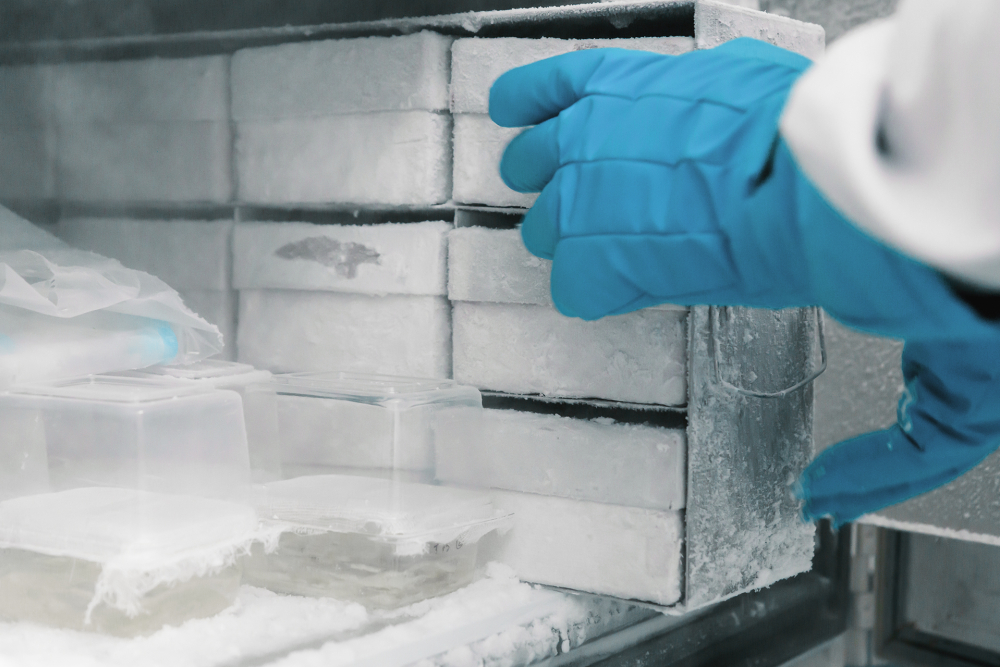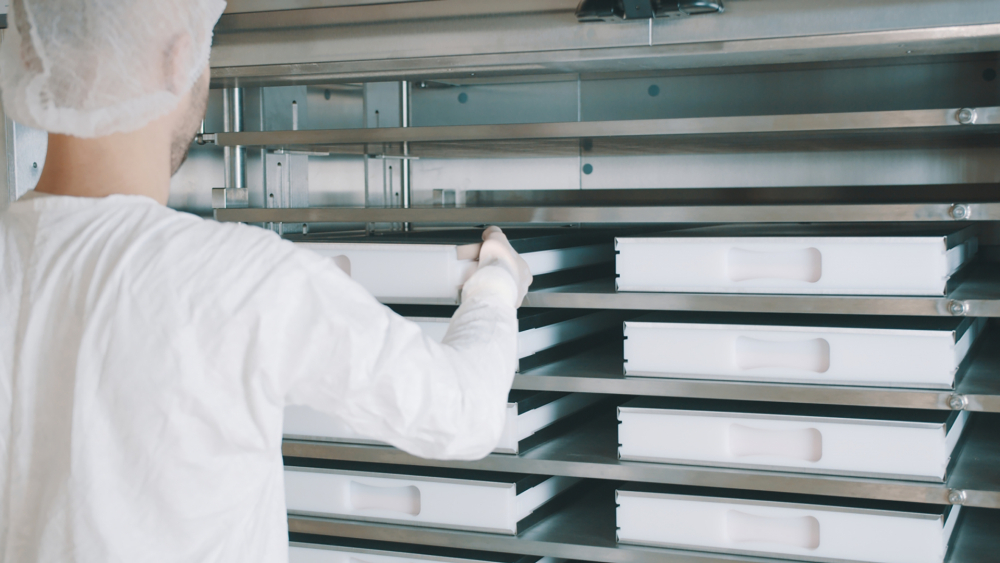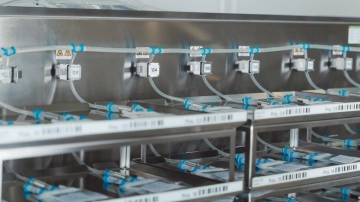Thawing drug substance: best practices
Table of contents
ShowThawing drug substances or active pharmaceutical ingredients as they are also known is a routine biotech process in practically every drug product manufacturing campaign. Freezing and thawing biologics are considered necessary process steps to preserve product quality between geographically separated manufacturing process steps and during cold storage.
However, protein solutions have to withstand severe stresses during multiple freeze and thaw cycles due to crystallization, cryoconcentration and liquid/container surface and liquid/air interfaces, especially when processing large volumes. These factors critically impact the product stability and may require development work for a suitable protein formulation and fine-tuning of process parameters to achieve specific quality attributes.
This article will give our readers an overview of thawing methods and thaw technologies in drug substance management and their impact on protein stability and formulation development.
The thawing process in drug substance management
Long-term storage of drug compounds is usually done in a frozen state to maximize product viability, with a focus on reducing contamination risk by taking several protection measures (e. g. safe primary packaging and an additional protection to avoid breakages) for a safe handling of bulk drug substances.
Contrary to the industry-wide perception, the thawing process is of high importance in drug substance management. It is coupled to the ubiquitous freezing of drug substance to reduce risks of degradation and mechanical stresses during transportations compared with liquids.
In the liquid state, all constituents are dispersed in almost perfect homogeneity across the volume. In contrast, the composition of the physical phases during freeze/thaw processes can differ greatly from the formulated values: protein concentration, pH value, salt concentration, excipient concentration. This leads to denaturation, formation of protein aggregates, oxidation of susceptible amino acid residues and adsorption to the inner surface of unsuitable single-use bags.
The extent and impact of damage caused by freezing and thawing will depend on the particular drug and is likely to be very different for monoclonal antibodies (mAbs), protein hormones, therapeutic peptides or vaccines. Therefore, scale-down models for large-scale freezing and thawing and stability studies should be performed at an early stage of process development to achieve validation of these process steps.
Read more: Drug substance vs. drug product – the differences

Uncontrolled thawing in biopharma processes
Thawing of pharmaceuticals is performed in either an uncontrolled or controlled manner, the latter of which can only be performed by plate-based freeze and thaw platforms, as they provide a controlled heat transfer across the container walls.
The uncontrolled method, on the other hand, features a less capital intensive and simplistic character, but requires a longer time and a very sturdy and tough drug substance – it refers to uncontrolled thawing rates and heat transfer.Therefore, it is probably seldomly desirable in biotechnology and more often encountered in small molecule drug manufacturing.
What is an uncontrolled thawing process?
Uncontrolled thawing processes involving bulk drug substance occur by simply moving the respective container in a warmer environment, e.g. from a cold room to an ambient plant floor, and waiting until the contents are at the desired temperature.
While this may seem like an easy process, it could take a long time. Additionally, this process is not standardized, but rather depends on different parameters like ambient temperature or the respective volume.
During the timespan between partial thawing and reaching liquid homogeneity, the dissolved drug molecules are exposed to the same physicochemical stresses as during slow freezing processes (freezing rates < 1°C per minute) and might lead to aggregation, degradation, precipitation and/or conformational changes. To alleviate these issues chemical cryoprotectants are routinely added to formulations, but optimal results are only achievable with faster, properly controlled thawing rates.1
Heating devices are remedial measures to shorten the thawing time span, but they may result in local superheating, i. e. undesirable temperatures, leading to degradation and possible contamination with leachables from sub-par bags.1
Pros and Cons of uncontrolled thawing
Uncontrolled thawing has its merits in bioprocesses but there are several downsides as well:
Pros
- Can be a simple move from the cold room to the plant floor
- Not capital intensive, requires no infrastructure
- Heating devices can improve process times and quality
Cons
- Undefined thawing rate
- Takes a longer time, could become a bottleneck in manufacturing processes
- Exposure to wrong pH values, salt concentrations, excessive drug concentration, leading to aggregation, precipitation, degradation, etc.
- Heating devices may cause local superheating
Controlled thawing of drug substances
Controlled thawing of drug substances is defined as supplying energy to the system at a rate that results in the desired temperature change per time unit. This requires some basic equipment to monitor and adjust the rate of heating in a feedback loop.
Pharmaceutical science studies reveal that most aqueous biomolecular drugs benefit from fast freezing and fast thawing to minimize exposure to the critical temperature range from -160 to -15 °C, where ice crystals show the tendency to grow instead of nucleation of new small crystals.
These growing crystals may damage large molecules and cells and should generally be avoided through temperature control and addition of cryoprotectants. Cryoprotectants are low-freezing sugars that are added to protein solutions to reduce damage. Nonetheless, they may be the actual cause for degradation during storage of mAbs in the frozen state.2

What is needed for the controlled thawing of biopharmaceuticals?
First and foremost, small scale models and case studies in research and development of biopharmaceuticals are required to establish the optimal temperature changes, processing time constraints and necessary heat transfer rates.
Conceptually similar to uncontrolled thawing, the actual thawing process might be implemented as a passive process in a cooled environment from e. g. 5°C up to room temperature and having air as heat transfer medium. Much faster is the immersion of the container in a temperature controlled water bath. Water is a superior heat transfer medium due to its large heat capacity and large heat flow into the container, but still cannot provide complete control over thawing rates.
Specialized equipment such as active freeze/thaw platform systems by Single Use Support, based on plate freezing, provide significantly more precision in a controlled thawing process. These solutions offer sophisticated monitoring and data collection options in accordance with GMP guidelines. Also, they provide fully automated programs to ensure controlled freeze and thaw processes as well as high reproducibility.
Advantages and disadvantages of controlled thawing
Controlled thawing of drug substances comes with many key advantages and disadvantages:
Pros
- High control over heat transfer rate possible
- Active thawing systems are much faster
- Ensures to minimize timespan in the critical temperature range for ice crystal growth
- Monitoring and data collection possible to conform to GMP
- Reproducibility through heating/cooling programs
Cons
- Requires investment of capital
- Training for operators is necessary
Conclusion – what thawing method should one choose?
Technically, a thawing process can be as simple as moving a container from a freezer to ambient temperature and waiting or using programmable devices that offer full control and conform to cGMP.
There is no universal answer to the question which method of thawing drug substances is the best one. The choice depends on the specific constraints of the overall process and the properties and stability of the drug compound and formulation. Of course, costs are key in making the decision.
If controlled thawing of a sensitive or high-value product is necessary, then investing in dedicated equipment should be considered. Single Use Support supplies cGMP compliant plate-based freezing/thawing platform systems which enable full control of heat transfer rates, programmed temperature ramps and data monitoring, complying with 21 CFR Part 11. Maintaining high product quality is a great tradeoff for the investment costs.
- Walking on thin ice: controlled freezing & thawing of pharmaceutical active molecules, http://dx.doi.org/10.18609/cgti.2022.212, Published 2023-01-17
- Frozen State Storage Instability of a Monoclonal Antibody: Aggregation as a Consequence of Trehalose Crystallization and Protein Unfolding, http://dx.doi.org/10.1007/s11095-010-0343-z, Published 2011-01-06








